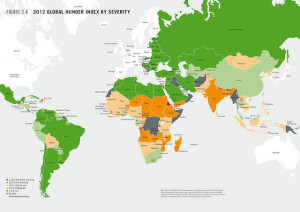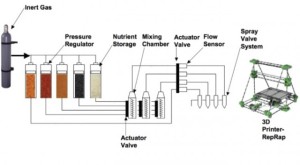In a fantastic development, the application of additive manufacturing technologies that other 3D printing enthusiasts and myself have long been promoting, NASA has recently awarded a $125,000 grant to further explore and develop the application of 3D printing food for astronauts. Initially aimed at efficient food storage for long-haul space flights, the creator of this project – Anjan Contractor, a Senior Mechanical Engineer at Systems and Materials Research Corporation (SMRC) in Austin, Texas, USA — hopes this technology could ultimately help the continually exponentially increasing population on Earth.
In the plan, a NASA-modified RepRap printer will be fitted with several culinary building blocks, from oil to protein powder, then mixed and deposited. As 3D printing typically utilises a layer on layer based methodology, layer-based foods like pizza are first on the menu.
Accordingly, Contractor envisions: “customized, nutritionally-appropriate meals synthesized one layer at a time, from cartridges of powder and oils.” So for the pizza, the 3D printer would mix the appropriate ingredients to deposit a layer of dough, which would be ‘cooked’ prior to laying down the next of tomato sauce (from a mixture of powder, water and oil. Additional layers of protein can then be added.

3D printing is a technology versatile enough to be incorporated into cooking. Indeed, some are speculating, albeit non-empirically at this point, that it could even replace it entirely!



